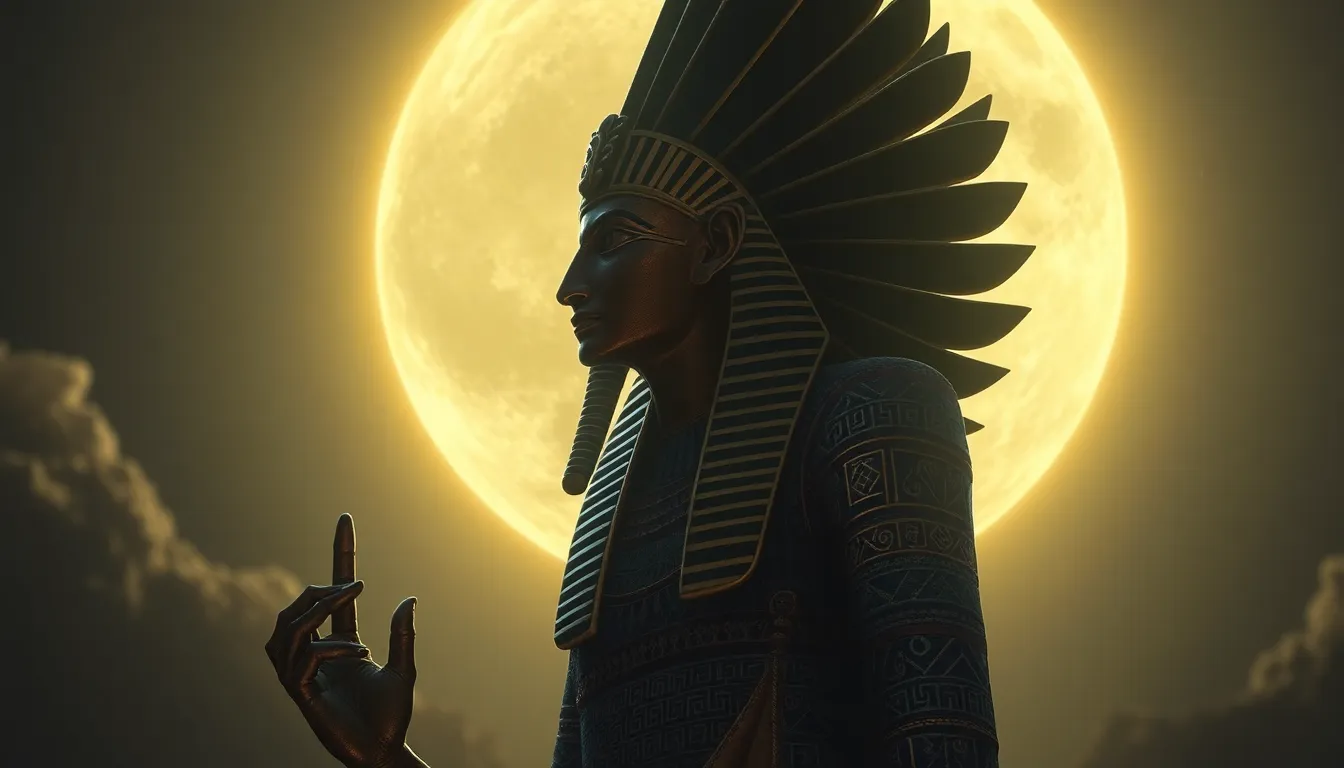Khonsu: The God of the Moon and Time
I. Introduction
In Ancient Egyptian mythology, Khonsu is revered as the god of the moon and time, embodying the essence of lunar cycles and the passage of time. His significance is deeply embedded in the fabric of Egyptian religion, illustrating the culture’s reverence for celestial bodies and their influence on daily life.
Lunar deities have held crucial roles in various cultures, often symbolizing change, growth, and the cyclical nature of existence. This article aims to explore Khonsu’s importance in Egyptian mythology, his relationships with other deities, and his enduring legacy.
II. Historical Context
Khonsu’s origins can be traced back to the early dynastic period of Ancient Egypt, where he emerged as a significant lunar deity. His worship evolved considerably through different dynasties, reflecting shifts in religious practices and societal values.
Throughout history, Khonsu was often associated with other deities, such as the sun god Ra and the sky goddess Nut. His connections with lunar deities in other cultures, like the Greek Selene and the Roman Luna, highlight the universal themes of moon worship across civilizations.
III. Iconography and Symbolism
Khonsu is commonly depicted in ancient Egyptian art and sculpture as a young man with a sidelock of youth, symbolizing his connection to the moon. He often wears a crown that features a crescent moon and a full moon, emphasizing his dominion over lunar phases.
- Crescent Moon: Represents growth and the waxing phase of the moon.
- Scarab Beetle: Symbolizes rebirth and the cyclical nature of life, linking Khonsu to themes of rejuvenation.
These symbols were not merely decorative; they conveyed deep meanings about time, healing, and protection in ancient Egyptian society.
IV. Khonsu’s Role in the Egyptian Pantheon
Khonsu held a unique place in the Egyptian pantheon, often regarded as the son of Amun and Mut, and closely associated with Thoth, the god of wisdom and writing. This relationship underlined his role as a protector and healer, revered for his ability to ward off evil and promote health.
Khonsu was also integral to seasonal and agricultural cycles, as the lunar calendar dictated many aspects of planting and harvesting. His influence ensured the agricultural prosperity of the Nile Valley, linking him profoundly to the livelihoods of the people.
V. Myths and Legends Involving Khonsu
Numerous myths feature Khonsu, with one of the most notable being the story of the moon’s phases. According to the myth, Khonsu would travel across the night sky, his light waning and waxing, symbolizing the constant change and renewal in life.
His interactions with other gods, particularly in tales involving Thoth, illustrate the interconnectedness of the Egyptian deities and their roles in maintaining cosmic order. These stories served to reinforce ancient beliefs about the universe and humanity’s place within it.
VI. Khonsu’s Influence on Timekeeping
The lunar calendar was vital in Ancient Egypt, guiding agricultural practices and religious festivals. Khonsu was intrinsically linked to this calendar, marking time’s passage through lunar cycles.
Khonsu’s association with timekeeping extended beyond agriculture, affecting various aspects of daily life:
- Religious Festivals: Many festivals were timed according to lunar phases, celebrating Khonsu’s influence.
- Daily Life: The moon’s phases dictated not only agricultural activities but also social and religious events.
This connection between Khonsu and time highlights the importance of celestial patterns in the ancient Egyptians’ understanding of the world.
VII. Worship and Rituals
Temples dedicated to Khonsu were prominent in ancient Egypt, particularly in Thebes, where the Temple of Khonsu became a significant religious site. Here, rituals and ceremonies were conducted to honor the moon god, especially during the waxing crescent moon.
Festivals celebrating Khonsu included:
- The Festival of the Moon: Celebrated the lunar cycles, emphasizing renewal and rebirth.
- Rituals for Healing: Priests and priestesses performed ceremonies invoking Khonsu’s healing powers for the sick.
The role of priests and priestesses was crucial in maintaining the rituals and traditions associated with Khonsu, ensuring his worship continued throughout the ages.
VIII. Legacy and Modern Interpretations
Khonsu’s impact on Egyptian culture and religion is evident in the lasting traditions and beliefs surrounding lunar worship. His legacy persists in modern interpretations of ancient mythology, where scholars and enthusiasts alike seek to revive interest in these ancient deities.
Today, Khonsu’s representation can be found in contemporary art and literature, where artists draw inspiration from the rich tapestry of Egyptian mythology, exploring themes of time, change, and the cosmos.
IX. Conclusion
Khonsu, as the God of the Moon and Time, holds a vital place in the tapestry of Ancient Egyptian mythology. His significance extends beyond mere representation; he embodies the cultural values tied to lunar cycles and the passage of time, deeply influencing religious practices and agricultural life.
The enduring fascination with ancient deities like Khonsu reflects humanity’s quest to understand the natural world and our place within it. Preserving cultural heritage and exploring these ancient beliefs allows us to appreciate the complexity and richness of human history.




